

Here follows a rough guide to the grading of coins used by collectors in the UK. It should be understood that there are grades which fall between the categories listed on this site and that different countries use different grading systems. It should also be understood that the overall value of a particular coin does not always depend on the grade alone.

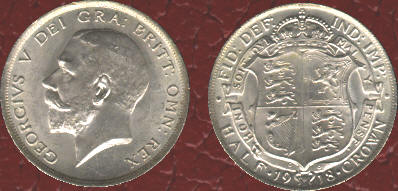 |
UNCIRCULATED (UNC) This category only applies to coins which have somehow escaped circulation. There may be slight toning or a few miniature scratches on the coin's surfaces and edges but no more than that, the coin is otherwise untouched. Coins in this condition often fetch very high prices, infact more so than in any other grade. It should be appreciated that a coin in this condition is very rare and only increases in rarity and value with age. |
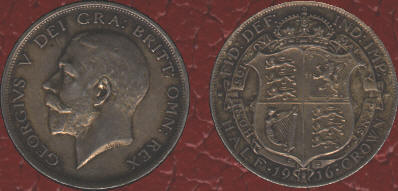 |
EXTREMELY FINE (EF) This describes coins which have been put into circulation but have received only minimum damage since. There may be some toning and a few slight marks or miniature scratches on the coin's obverse and reverse surfaces. This grade can also fetch high premiums, but this is more likely with older rarer coins. |
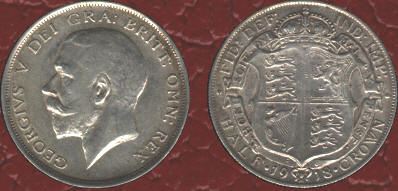 |
VERY FINE (VF) Coins in this condition show some amount of wear on raised surfaces but all the other details should still be very clear. (Hair and the Face) The value associated with this grade is not as high as the two above because it more common to find coins in VF condition. The difference in value between EF and VF can be very substantial especially with more desirable and collectable coins. |
 |
FINE (F) This grade of coin shows noticeable wear on the raised parts of the design, most of the other details should still be clear. (Most of the face shows wear.) The wear on fine grade coins significantly effects the value in most cases when compared with higher grades. The reason for this deprecation is partly attributed to fine condition being one of the more common grades for old coins, however value still generally increases with age. |
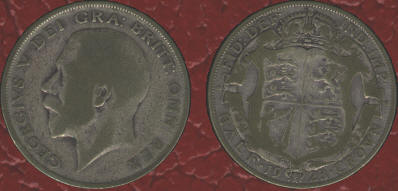 |
POOR / FAIR Most of the obverse and reverse surfaces are worn smooth with nearly all the detail removed by years of circulation. This is by far the most common grade for old coins. With poor or fair being the most common and hence easily obtainable grade for any coin the condition of these coins severely effects the value. |

 |
UNCIRCULATED (UNC) There is no such category of condition that applies to hammered coins. Most hammered coins are found as a result of archaeology or prospecting such as metal detecting. If an uncirculated example existed it would be extremely rare indeed and hence priceless. |
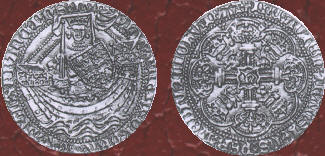 |
EXTREMELY FINE (EF) Hammered coins in EF condition are extremely rare, but examples are known to exist. In this grade the coin should have some slight signs of circulation, toning and some marks are acceptable. Most because they have been struck by hand will look a little rough but the detail will always very strong and sharp. No detail should be missing from the design. (Hair and face etc very clear.) EF hammered coins always fetch a very high premium at auction. |
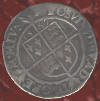 |
VERY FINE (VF) Very fine hammered coins are much more common than EF examples however they are still quite rare and well sought after by collectors. There will be some signs of circulation but all the detail should still be visible on both the obverse and reverse. There may be toning and some marks, however none should conceal detail to any great extent. (Most valuation reference books quote VF as the highest grade for hammered coins.) |
 |
FINE (F) This grade represents the majority of hammered coins on the market. The coin's surfaces may be significantly worn by circulation as in the case for milled coins of the same grade. Most of the detail should still be visible however some areas may be warn smooth. (Hammered coins of this grade are still valuable.) |
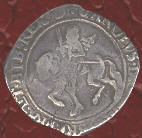
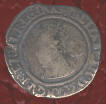 |
POOR / FAIR Most of the coin's surface is worn smooth and nearly all the detail is removed. Outlines of the design should still be visible and the flan used for striking still fully intact. |

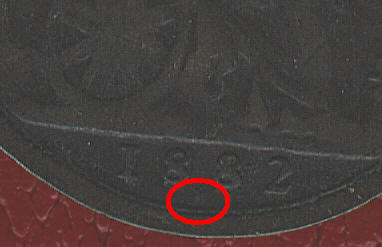
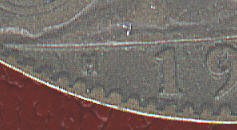
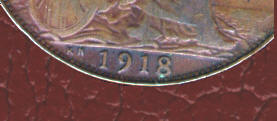 |
HEATON (H) AND KINGS NORTON (KN) The Heaton mintmark is found on bronze coins of Queen Victoria and King George V denoted by a small "H." These are located centre bottom of the date box under Britannia for Victorian coins, (area circled) and top left of the date box under Britannia for George V coins. Heaton "H" identifies coins struck by Ralph Heaton Sons, Birmingham.
The Kings Norton mintmark "KN" is found in the same place as the Heaton mark on the George V penny, however it only appears on pennies dated 1918 and 1919. The use of the KN mintmark denotes coins struck by Kings Norton Metal Co. Pennies with the KN mark are reasonably valuable as they are rare whereas the Heaton mark is a little more common. |
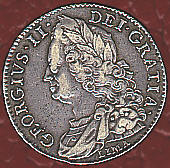 |
(LIMA) LIMA is possibly a mark that denotes bullion supplied by Admiral Anson captured on his voyages around the world. There is also speculation that the the LIMA mark denotes the use of captured Spanish bullion from South America. This mark is found below the bust of some of George II's coins dating 1745/1746. |
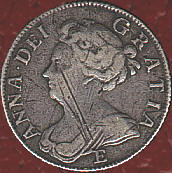 |
EDINBURGH (E) Minted in Edinburgh, found below the bust on coins minted under Queen Anne. |
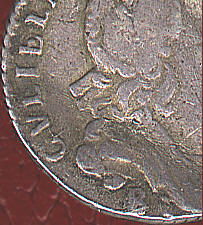 |
BRISTOL (B) Minted in Bristol, found below the bust on coins of William III |
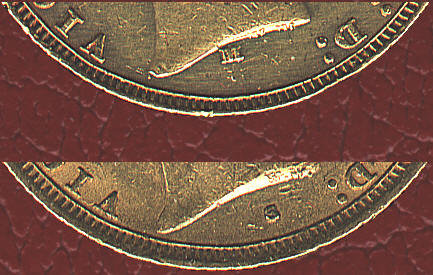 |
SYDNEY (S) AND MELBOURNE (M) These two Victorian sovereigns have the marks for minting in Sydney and Melbourne, Australia. |
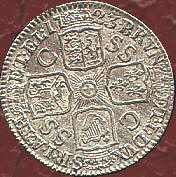 |
SOUTH SEA COMPANY (SSC) This George I shilling bears the mark of the South Sea Company. |

There were many mints that produced hammered coins particularly in the early medieval period where it was common practice to include the moneyer's name on coin rather than the mintmark. It was only when the minting of coins became more regulated and centralized that such marks began to appear. It is also worth adding that these marks are often a little more subtle and sometimes more difficult to spot. Most marks start to appear on pieces from the early Plantagenet's and increase in verity through to the reign of the Stuart's. Unfortunately because there is such a wide range of mintmarks associated with hammered coinage I will not cover them here I have other pages dedicated to this subject, CLICK HERE to read more. If you are interested in hammered coinage and mintmarks of this period it is more advisable to obtain a specialist book on the subject my site is only designed to be a quick reference guide.

This is by far the most important factor when considering the value of coins. How rare is the coin you have and how can you find out? Well most coin price catalogues state rarity and in the case of milled coinage show how many coins were minted for a particular year. Remember the fewer coins minted in a year the rarer and potentially more valuable that specific date will be. So be on the look out for coins that were produced in lower numbers, it could mean that you have a something very desirable for collectors. Just remember a coin does no always have to be in perfect condition and very old to be valuable. (Example: Edward VIII coins were never issued hence all extremely rare. Price for an Edward VIII Crown 1936-7 is £100,000.)
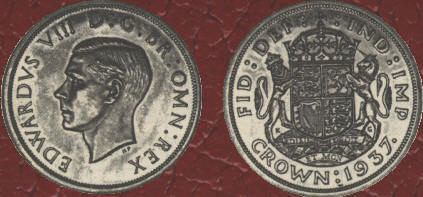

Most metal detectorists are very clued up on coins and know when they have found a good one. However I have come across people that have been detecting for many years who have told me some shocking stories about coins they have found and sold for next to nothing, only to find out later what they were truly worth. I have therefore dedicated this part of my website to those of you who are unsure about the value of coins and want to know more so you don't fall into this trap. If in doubt get a good up to date coin price guide or catalogue and look your coins up. Make sure you go into a deal prepared and with a good idea of what your coin is worth. If you don't get at least 80% of the book value then don't sell you can always get a better deal off someone else. Remember when it comes to valuing your coins all the above factors on this site should be considered. Also remember as in the gold market prices do fluctuate so it is important to keep up to date with market developments.